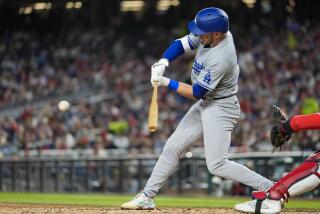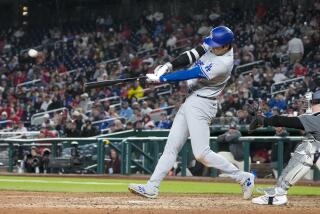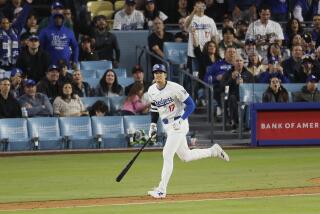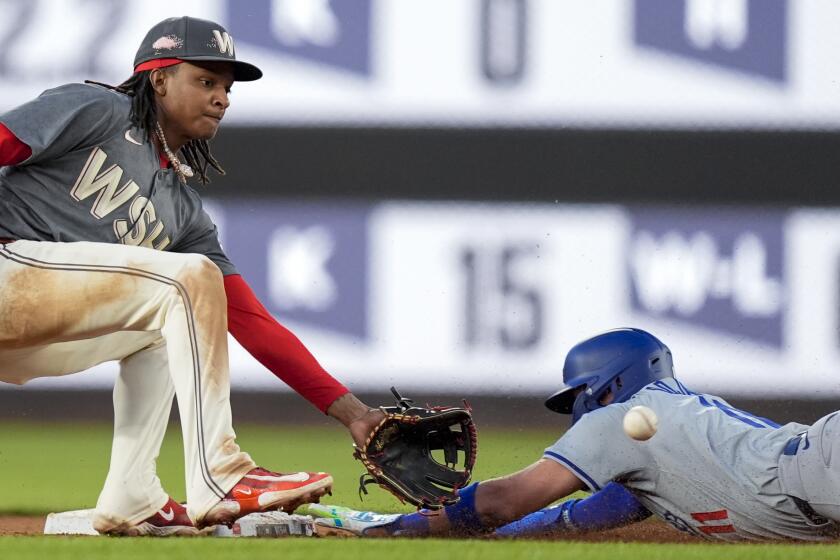Dodgers pitcher Brandon McCarthy driven to succeed after battle with ‘the yips’
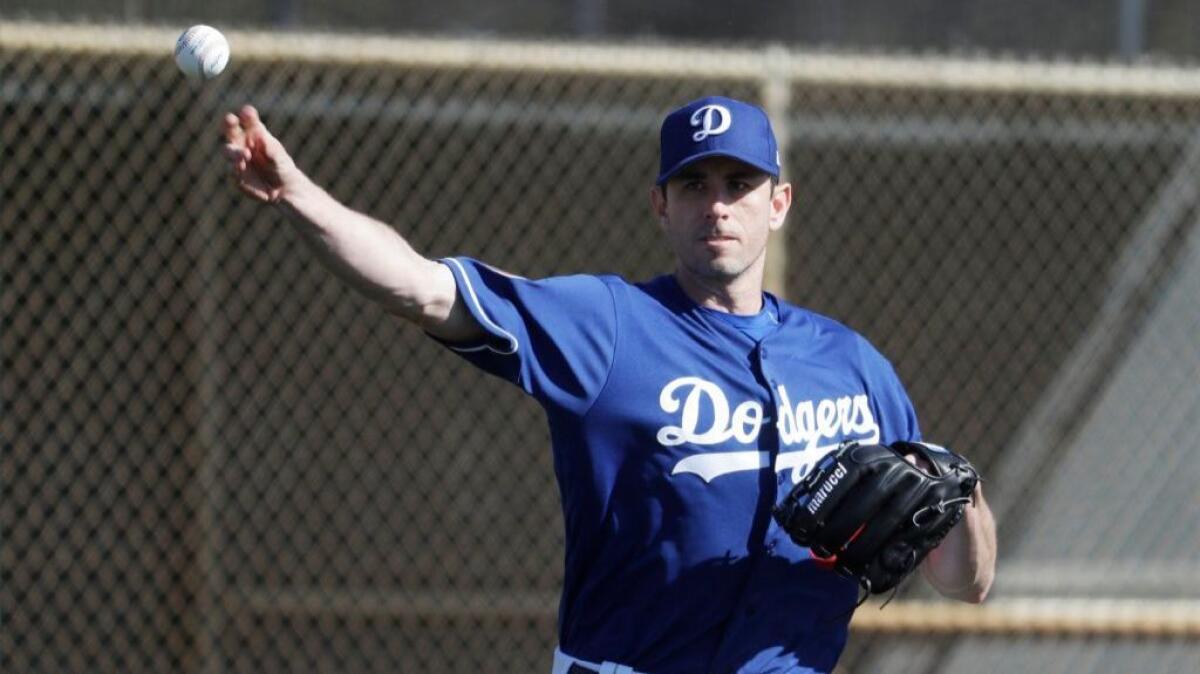
To own up to weakness is a challenge in itself. To open up to the world about it, to expose your vulnerability to anonymous critics on social media, takes a particular kind of courage.
“There’s only so much hiding you can do,” Brandon McCarthy said.
McCarthy is a pitcher for the Dodgers, so what happened last summer put his career in jeopardy. He lost his ability to throw a baseball with accuracy.
Jon Lester of the Chicago Cubs throws strikes regularly, but he struggles to make the short throw from the pitcher’s mound to first base. Yet there he was last fall, as the starting pitcher in Game 1 of the World Series.
McCarthy, watching from his couch, took to Twitter.
“Once you go through the yips,” wrote McCarthy, using the term that in baseball refers to a player that inexplicably loses the ability to make a good throw, “it totally changes how you watch Lester. The fact he’s still this good is astounding.”
And then McCarthy engaged fans, with concise explanations that translated a rare sports experience into layman’s language.
He wrote this: “Feels less like psychology and more like a glitch in the brain.”
And this: “Like if you tried to touch a hot stove and instinctively your brain just stops your hand or decelerates it a ton.”
McCarthy said he did not plan to elaborate on his condition — just a spur-of-the-moment response to boredom, he said — and did not consider his tweets particularly therapeutic.
“But I’m not afraid to say what people really know, I guess,” he said.
He is past the yips, or so he and the Dodgers hope.
In three starts last August, he issued five walks each time. The total: 15 walks — and two hit batters — in 8 1/3 innings.
Arizona Diamondbacks ace Zack Greinke, who played with McCarthy on the Dodgers, said his former teammate was afflicted by a condition that strikes without warning or reason.
“Not many people have it,” Greinke said. “It just happens sometimes.
“He’s got some really good stuff. He can get away with it for a little while, but it always helps to be able to throw the ball where you want it, no matter how good your stuff is.”
The Dodgers put him on the disabled list last August — they cited a stiff hip — and he made a mechanical adjustment that he said enabled him to stop worrying about whether he could throw the ball anywhere near the strike zone and resume trying to throw the ball to a precise spot within the zone.
“I think most of it was mechanical,” McCarthy said. “Usually, if you get the shanks in golf, something has gone wrong physically in your swing, and you lose your mental feel for what you are trying to do. It becomes sort of a self-fulfilling thing. I think that was really the extent of it.”
In his one September start, he walked one in 5 1/3 innings. The Dodgers did not include him on the postseason roster, but they would love for him to win a spot in the starting rotation this spring.
In his Cactus League debut on Friday, he issued no walks in two innings against the Arizona Diamondbacks, although he gave up a two-run home run to noted Dodger killer Paul Goldschmidt.
“He’s just a pain,” McCarthy said. “I think every team feels like he has a bias against them.”
McCarthy, 33, is entering the third year of a four-year, $48-million contract. Andrew Friedman, the Dodgers’ president of baseball operations, was widely criticized for guaranteeing four years to a pitcher that had been on the disabled list 11 times in the previous eight seasons.
After four starts in his first season, McCarthy was diagnosed with a torn elbow ligament and required reconstructive surgery. After eight starts in his second season, he could not reliably throw a strike.
McCarthy said he would like to deliver for the Dodgers but said he is not driven by trying to vindicate Friedman and the team for the signing.
“It’s not a conscious thought like, I want to do right for them,” McCarthy said. “The two things work together. I don’t ever want to half-ass this. The day where the motivation is not there to come in and do it, I have no problems ‘Gil Meche-ing it’ and just walking home and leaving it.”
In 2011, Meche retired from the Kansas City Royals, walking away from $12 million when he decided he could no longer compete effectively because of an injured shoulder. The money would have been guaranteed to Meche even if he had spent the entire season on the disabled list.
The Dodgers owe McCarthy $10 million this season and another $10 million next season.
“I’m going to give everything I can,” he said. “If I’m doing everything I can do and the results aren’t there and it’s a bust on their end, then that’s part of the risk that’s assumed.
“For me, I’m going to do everything I possibly can to run through the finish line of whatever deal and whatever season I’m playing. That’s personal pride. It’s not contract based. It’s not loyalty based. It’s just simply mindset, I guess.”
Dave Roberts, the Dodgers’ manager, would not go so far as to say a spot in the rotation is McCarthy’s to lose. For now, Roberts said, he is satisfied that McCarthy has moved “well beyond” the lack of control that interrupted a season and endangered a career.
“Taking ownership and being honest with himself last winter about it was big for him,” Roberts said. “Right now, there are no signs of what we saw last year. …
“I think that over the winter he said he had some mental things he was going with and dealing with. That was unbeknownst to me. Through social media, I guess, he was talking about some of the misfires. Whatever he did, he’s past it, and he’s throwing the ball really well.”
Follow Bill Shaikin on Twitter @BillShaikin
More to Read
Are you a true-blue fan?
Get our Dodgers Dugout newsletter for insights, news and much more.
You may occasionally receive promotional content from the Los Angeles Times.

